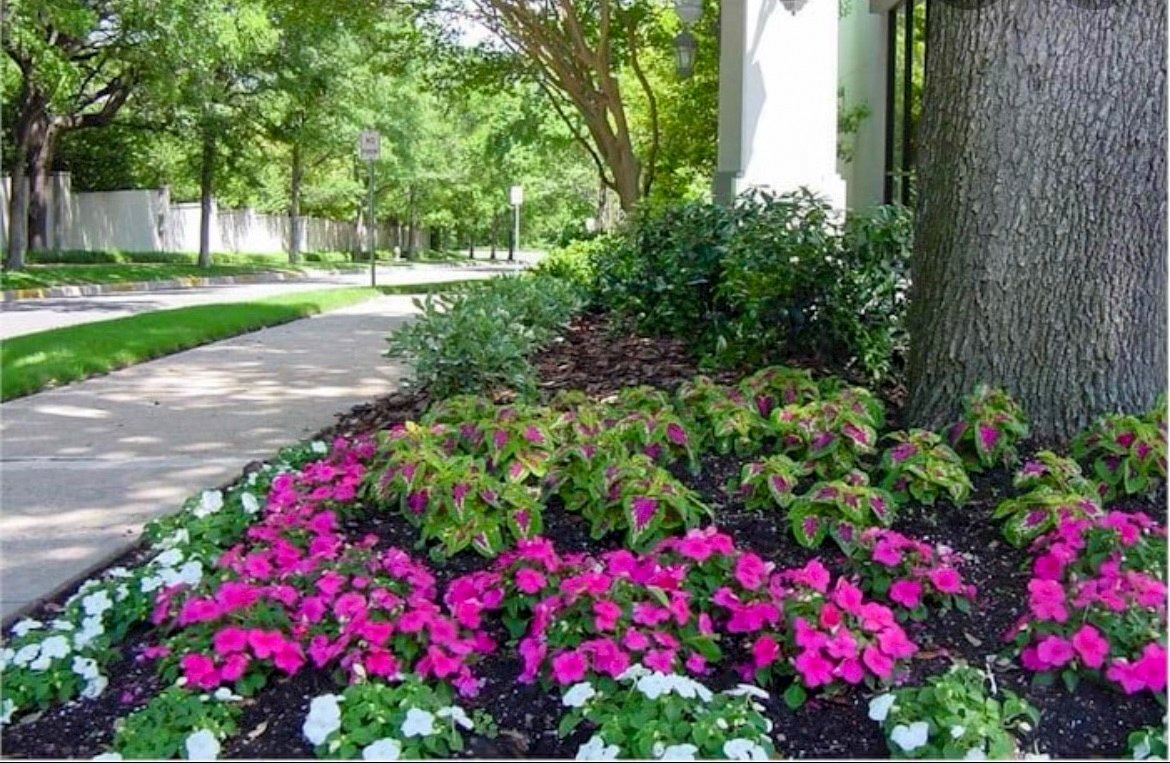Digging in the Dirt
The first home my husband and I purchased was in a neighborhood full of new builds. The lot the house sat on was roughly the size of a shoe box with the front evenly divided into driveway and sod. A standard baby oak tree was stabbed into the center of the five rolls of Bermuda grass that constituted our front “yard”, and a tiny flower bed with three unkillable shrubs anchored the front door to the corner of the house. Other than that, there was no exterior dressing. From the outside it looked just like the fifth house down the street, which looked like the fifth house down the street, which looked like the fifth house around the corner, and so on. 16916 Applewood Drive was a naked mole rat in a family of naked mole rats. It needed cover, it needed softening, it definitely needed pizazz. And I desperately wanted it to look like it had been there for more than five minutes. So, I bought a bunch of gardening magazines, a shovel, a rake, and a spade, and I taught myself to grow things in the Oklahoma clay.
That’s when I fell in love with digging in the dirt.
The north side of our cookie-cutter house had about a six-foot slope between the foundation and our neighbor’s property line. It was an ugly strip of nothingness that served mostly as a red river when it rained. We planted grass, but it would only grow on the outer half-- the part the sun reached-- and even there it was hit and miss. The three feet next to the foundation, the part tucked under the house’s eave, was an eyesore and a dilemma. So that’s where I chose to start.
Rummaging through a Better Homes and Garden’s magazine, I found a picture of a shade flower bed that ran alongside the foundation of a house, and I was smitten. It was magnificent. Exactly what the copycat house needed to help it come alive. So, I tore the picture out and followed the instructions for creating it to a “T.” I painstakingly readied the soil, mixing rich, dark dirt with compost. Then I meticulously spaced and planted tiny, rooted starts. Then I watered and waited and watered and waited and watered and waited some more. And every morning I’d go out and yell at the tiny green thumbnails to grow.
The magazine failed to tell me that things become in their own time.
The Law of the Farm is pretty clear about that though: plow the ground, clear out the riffraff, sew the seeds, feed and water. And wait. We doers hate the last part of that plan. The work is not a problem, even when it’s backbreaking and relentless. And the follow through of daily diligence? We can deal with, too. Easy breezy. But the waiting? That drives us insane. The harvest comes when it wants to-- when its ready to--and no amount of cajoling is going to quicken its pace. But, still, it makes our hearts burn. Tom Petty hit the nail on the head: the wai-a-ting is the hardest part.
For years, I’ve had a picture of a grove of Chinese Bamboo trees in a frame in my home office. I don’t care, especially, for how they look, but I love what they represent, the story of how they become. They’re the poster child for patience in our world of hurry-up. When the seeds of a Chinese bamboo tree are planted, nothing happens in the first year. There is absolutely zero visible growth above the ground. The second year is the same: zero visible growth. Can you imagine 730 days with nothing to show for your toil? The third year and the fourth years are the same: zero visible growth. Then, late in the fifth year, long after most have forgotten a seed was even planted, a little green shoot pushes through the ground. And within six weeks, the Chinese Bamboo tree soars to 90 feet in height. It just explodes like the fairytale beanstalk boldly toward the sky.
The blueprint serves as a reminder that while a gardener’s job is to create the conditions, the growing’s not up to us.
Underneath the soil, the Chinese Bamboo is obviously building an intricate root system that can support its massive growth. It’s doing the inside work that makes the outside product possible. It’s nature giving us a tutorial on the necessity of giving things time to root in. The blueprint is a reminder that while a gardener’s job is to create the conditions, the growing’s not up to us.
That flower bed I planted in the shade below the northern eave of my first house one day erupted. I drove up the driveway and thought for a minute that I’d pulled into the wrong cookie-cutter drive. The north side flower bed was bulging with vegetation that looked just like the magazine. I couldn’t believe it. And it felt like it came out of nowhere! Like somehow it had just decided that it was time to stand up and be seen. The whole thing felt miraculous-- and overnight-- though I’m sure it had been happening in increments too small to ascertain.
Digging in the dirt became my passion. I got addicted to the “work, wait, and see.”
Gardening is cathartic. It’s affirming. It’s frustrating. It’s unpredictable. And it comes without promise that a flower will ultimately bloom. But one might. And that’s more than reason enough to keep planting.
Sherri Coale
P.S.



